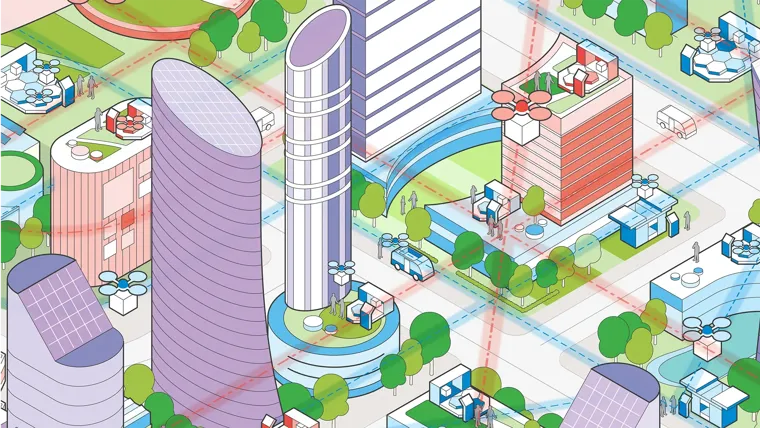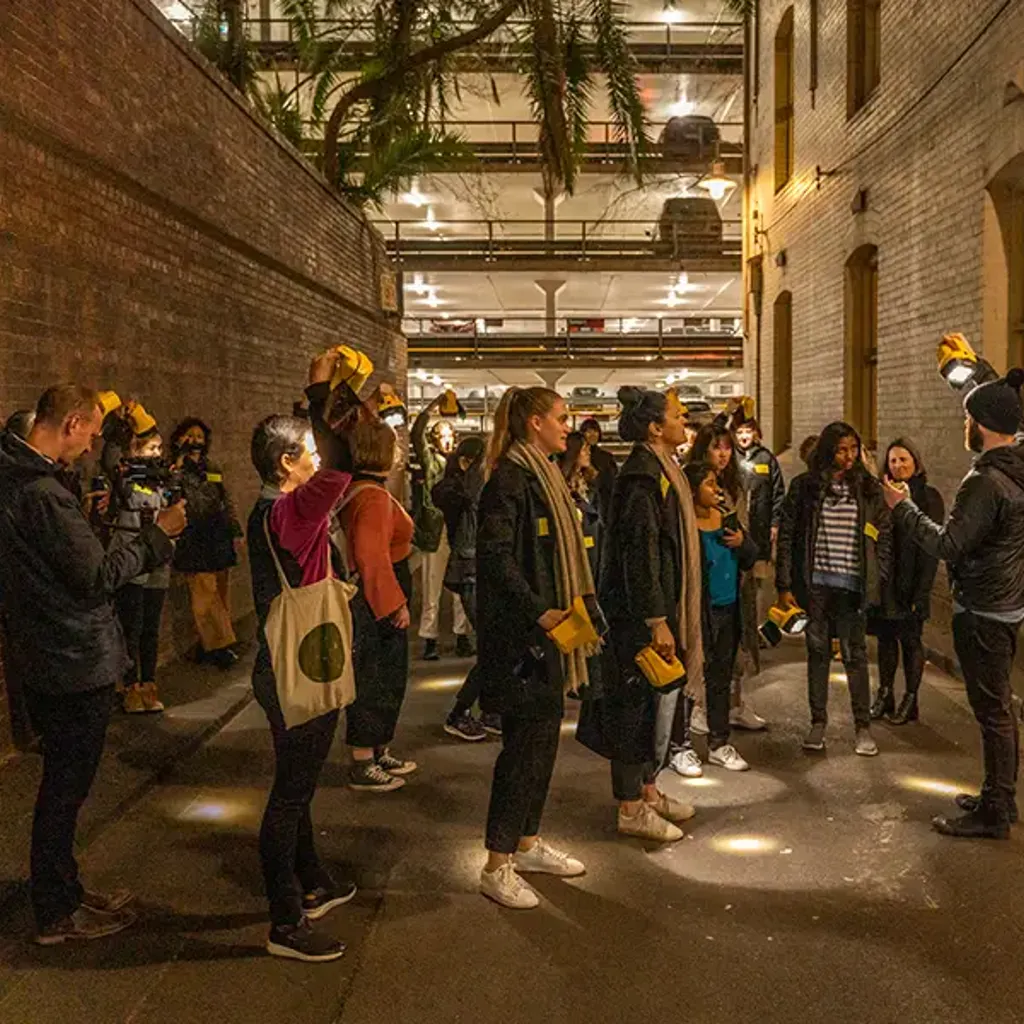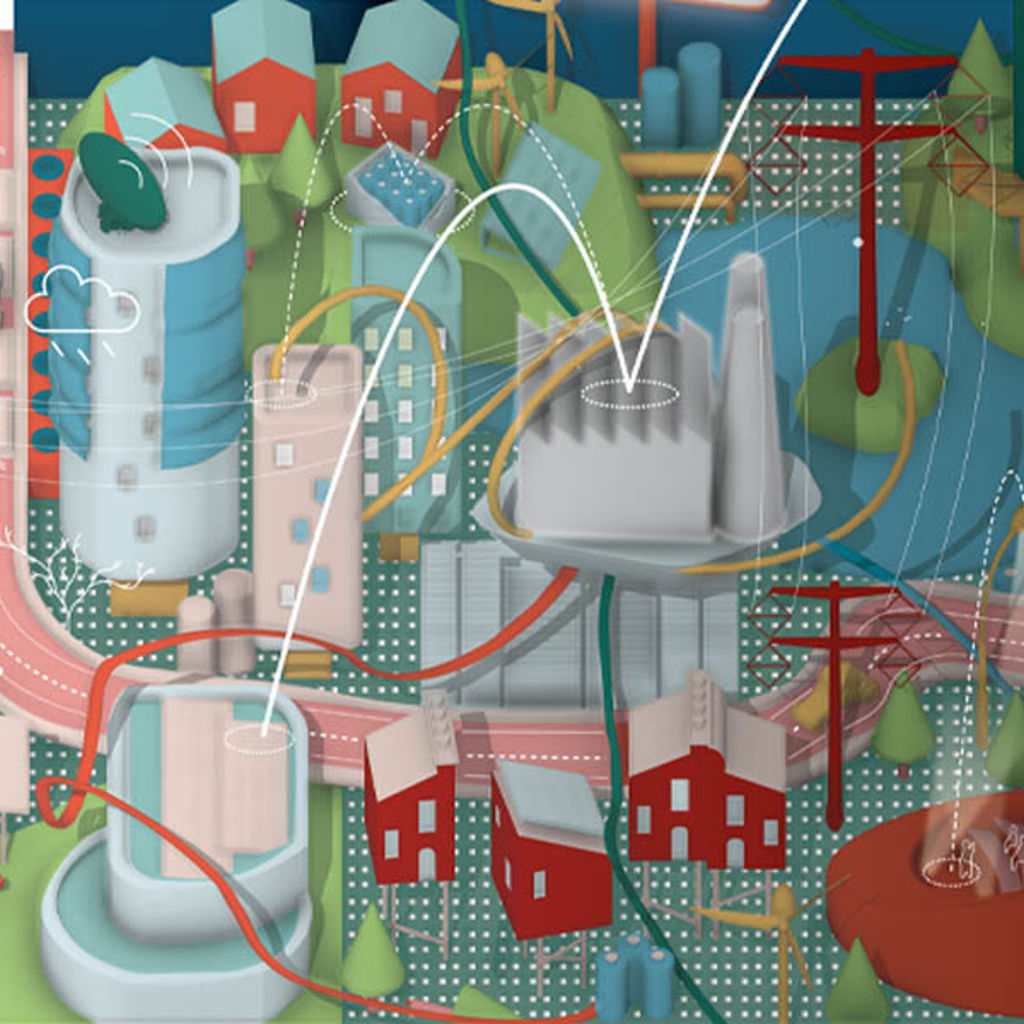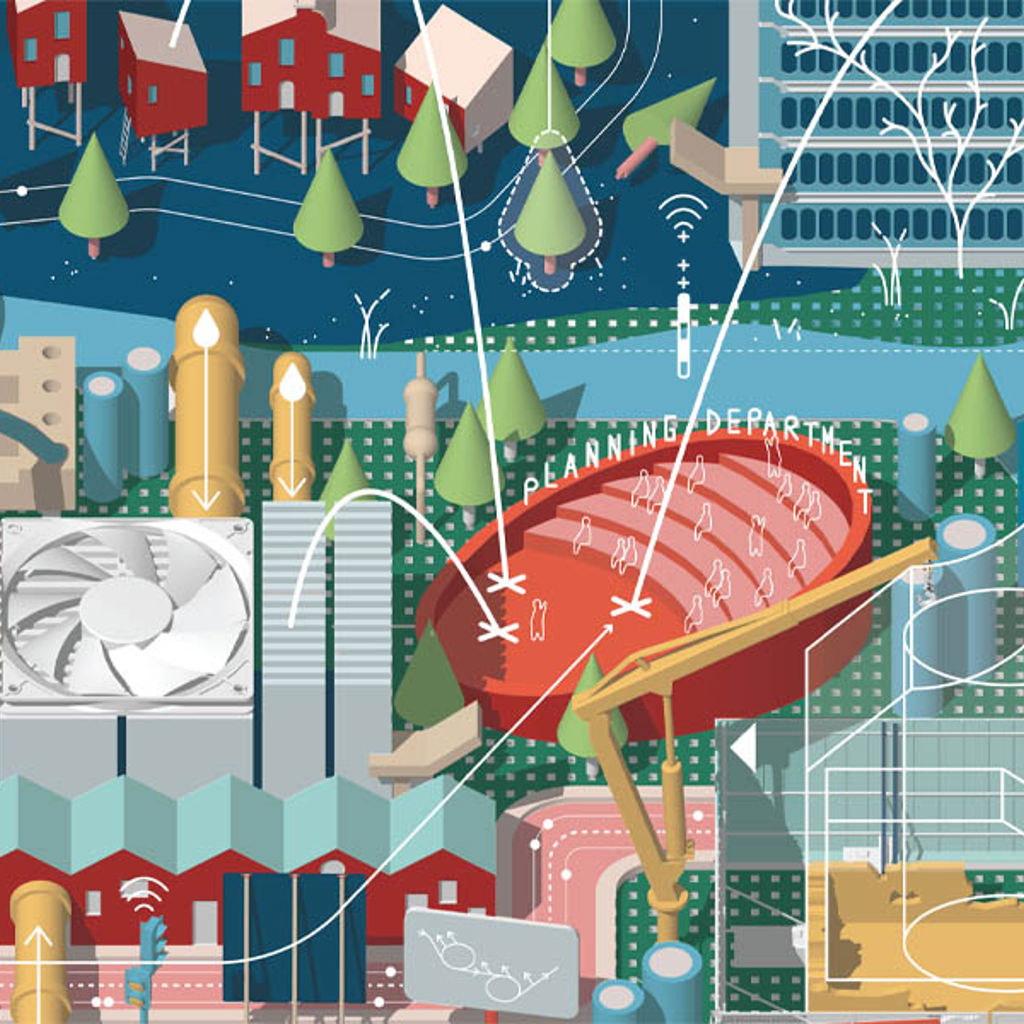Drones, deliveries, public transit – how should countries approach the emerging ‘low altitude economy’?
Michael Rogers explores how advanced air mobility is reshaping urban infrastructure, logistics, and the future of city design in China.


Michael Rogers
Senior Urban Designer
Last updated: September 2025
As its densely populated cities and regions grow, China is looking for innovative ways to continue to expand connectivity. One emerging concept has been the so-called "low-altitude economy" - broadly defined as any commercial activities conducted in airspace under 1,000 meters.
This is being driven by advances in advanced air mobility (AAM), a range of new air transportation technologies and services using automated, often electric, vertical take-off and landing (eVTOL) aircraft, including air taxis and delivery drones. This has opened up new ways to move people and goods, and one area, Shenzhen, has already developed 203 active AAM routes, supported by 121 take-off and landing platforms. The area’s plans are ambitious, with more than 1,200 further platforms planned or in development.
At Arup, we’re always interested in new approaches to transportation and logistics, and are keen to explore their implications for the way we design our cities, towns, and infrastructure. As we have previously seen with the increasing digitalization of transportation, technology can unlock incredible productivity gains, but there are also complex impacts to anticipate and accommodate within the wider fabric of towns and cities.
Beyond transportation, we can already foresee that the low-altitude economy will encompass logistics, improved emergency response, and environmental monitoring to new tourist services. Policymakers and business leaders in China are pioneering this shift, viewing low-altitude airspace as an additional layer of infrastructure, akin to highways or high-speed rail. At Arup, we are carrying out socio-economic and engineering research into the many significant implications of this trend.
The Greater Bay Area: an area for innovative experimentation
Currently, we are seeing significant development of the low altitude economy (LAE) concept in China’s Greater Bay Area (GBA). Home to over 87 million people (as of 2024), the GBA spans two Special Administrative Regions, Hong Kong and Macao, and nine cities in Guangdong Province, including Shenzhen, Guangzhou, and Zhuhai. Once a manufacturing powerhouse, the region has evolved into a global center for technological innovation, particularly in high-tech sectors such as drone technology and smart infrastructure. Its dense urban fabric, advanced technology ecosystem, and supportive policy environment create ideal conditions for pioneering LAE initiatives.
So how do these services integrate with existing ways of life? Embedding LAE into urban life is not a matter of adding drones to the skyline; it requires us to rethink how cities function from the ground up. For urban planners, this means treating the sky as a spatial layer with its own infrastructure, governance, and public interfaces. LAE must be designed as part of the city’s connective tissue, integrated with transportation systems, land use strategies, and digital networks. For starters, our research identifies three essential components for successful integration: networks, which manage how drones are organized and controlled across the city; routing, which ensures drones move safely and efficiently through urban airspace; and delivery, which enables goods and services to reach people through well-designed handoff points. Together, these components must work in harmony with existing infrastructure to ensure seamless operation and public benefit.
Unlocking the full potential of LAE means reimagining the sky not just as a pathway, but as a living part of the city. Today’s limitations, like short battery life, limited payloads, and fragmented regulations, will require bold solutions.
However, the real test will lie in earning public trust and designing systems that recognize, respect, and respond to the ways people already live.
A balanced, place-based approach to LAE
The low-altitude context may be novel, but it comes with many real-world constraints. We can, however, already imagine where connections to ground systems will be. Integrating LAE into multimodal transportation hubs such as train stations and ferry terminals could enhance regional connectivity.
Our report looks at the opportunities LAE offers to encourage placemaking strategies that convert delivery-dominated sidewalks into shared public zones, especially in high-density areas like Shenzhen and Hong Kong. This spatial reconfiguration is not just about efficiency; it’s about reimagining the city’s vertical dimension as a valuable, but shared and governed public asset.
For example, in our report we promote a dual-use land concept, which proposes transforming former industrial or logistics sites such as warehouses and distribution centers into publicly accessible green spaces that also serve as drone logistics infrastructure. This balanced approach not only reclaims valuable urban land but also provides useful infrastructure opportunities, like rooftop drone pads, multi-level logistics hubs, and integrated vertiports. By embedding useful drone-delivered public services within these repurposed zones, cities can develop their local LAE opportunity while increasing their ability to meet the wider, relevant needs of the community.
Next-generation technology, operation, and regulation
The emergence of a low-altitude economy is accompanied by a fundamental shift in how mobility should be governed and operated—something else our new report explores.
At a technological level, these new forms of transit will require robust digital infrastructure (6G, edge computing, AI/ML) in order to deliver the inherently responsive kinds of mobility services. More complex than ground-based transportation, they must be able to adapt dynamically to air conditions and user demand while remaining within tight regulatory constraints.
At a transportation planning level, we’ll see new flight rules and routing typologies (e.g., managed flights, preapproved sky lanes, multi-hop networks) will be required to ensure safe and efficient operations.
Finally, there’s an inherent need to embrace innovation as new regulatory standards are defined and implemented. This includes urban air traffic management systems, supported by automated compliance frameworks and the real-time monitoring that will be needed to operate a safe and scalable system of commercial players and services.
At the broadest level, our research tells us that mobility is no longer just about moving people and goods—it’s about designing systems that can listen, learn, and respond to a dynamic system of people’s preferences and demands.
The need for research and strategy
Our new report, Planning for a Low-Altitude Economy in the Greater Bay Area, offers a strategic playbook for this transformation. It outlines how cities can embed LAE into urban planning and design, moving from isolated pilot projects to systemic change. You can read the Executive Summary here.
As LAE continues to evolve, we remain committed to supporting its growth through thoughtful design, forward-looking planning, and seamless systems integration. From shaping policy frameworks to designing infrastructure and digital systems, we are helping cities around the world unlock the potential of LAE and AAM, creating more connected, resilient, and accessible future urban environments.
Get in touch with our team




